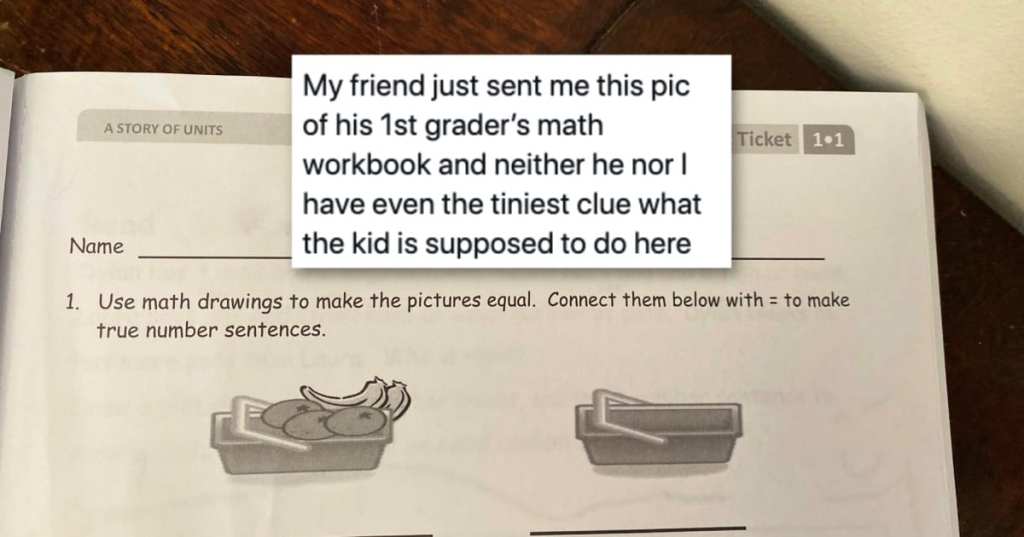Math is hard for a lot of people, whether it’s first grade math or something more advanced. For other people – like, say, someone who graduated from MIT with a degree that required many, many courses in math – it’s a bit easier.
But that doesn’t mean something simple can’t still trip you up – which is exactly what happened to MIT graduate (and friend of tweeter Helen Rosner) when he was sent a picture of a math problem in Helen’s first-grader’s workbook.
https://twitter.com/racheleklein/status/1313498038590148610
Neither the friend nor Helen could make heads or tails of what the child was supposed to do to make two baskets and some fruit “equal” on paper, so they asked Twitter.
Twitter had, as you might imagine, a few questions – none of which were “what is a math drawing,” which really should have been first, if you ask me.
One person asked “Are you…supposed to draw the exact same fruits in the second basket????? To make them ‘equal’????? I feel like it’s a psychology experiment and not a math problem.”
Are you…supposed to draw the exact same fruits in the second basket????? To make them “equal”????? I feel like it’s a psychology experiment not a math problem.
— Rachel Klein (@racheleklein) October 6, 2020
Can they do psychology experiments on our small children without our consent? If so, that’s almost certainly what’s going on.
One dude seemed pretty confident in his reply, which was “subtract the fruit to show how you get from a full basket to an empty basket, the point is to reinforce the relationship between abstract math and the physical world.”
subtract the fruit to show how you get from a full basket to an empty basket, the point is to reinforce the relationship between abstract math and the physical world
— ben (@BenMahtin) October 6, 2020
Which, okay, maybe that’s the point but it still doesn’t make sense, since as Helen points out, you can’t subtract fruit that’s printed on a page.
A college math instructor chimed in with perhaps the most plausible explanation of the bunch:
“College math instructor here. My thought: make sure that both baskets have the same number of fruit. You could do this by adding three oranges and two bananas to the right, but you could also add FOUR oranges and two bananas, then an extra orange to the left!”
College math instructor here. My thought: make sure that both baskets have the same number of fruit. You could do this by adding 3 oranges and 2 bananas to the right, but you could also add FOUR oranges and 2 bananas, and then an extra orange to the left!
— Bill Shillito (@solidangles) October 6, 2020
“I have a feeling that a big point here is to get students to think of the ‘=’ sign as not just meaning ‘the answer it’ – that’s what leads kids to think that statements like 7=2+5 or 6=6 are wrong – but rather meaning that the things on either side are equal *to each other.*
Put that way, the lesson makes sense, but man, the question really is worded poorly (and would an example have killed them?).
What do you think? Is the college professor right or is it just unsolvable by a logical brain?
Weigh in down in the comments!
